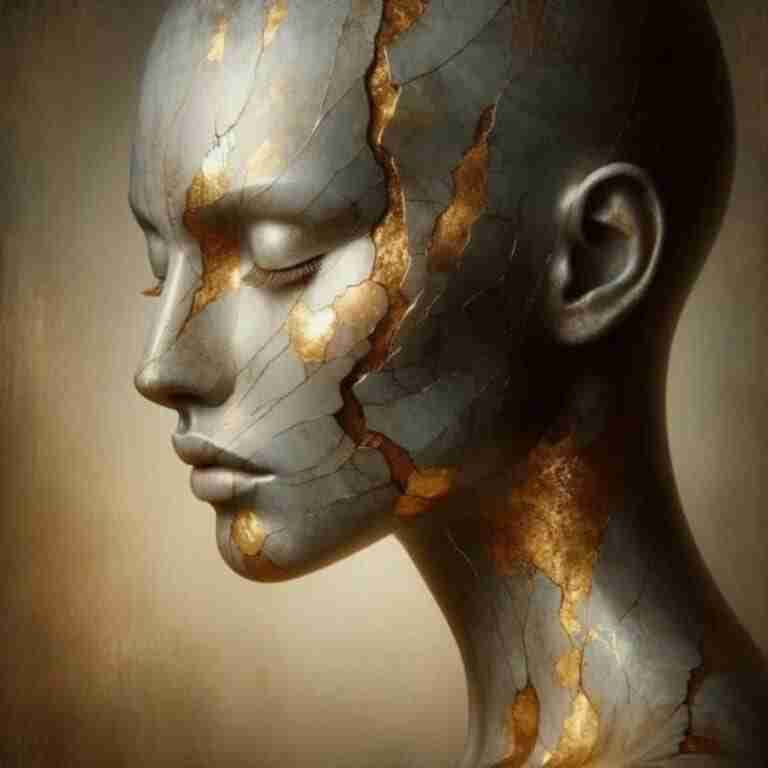36 Kintsugi Quotes for Finding Beauty in Brokenness
If you have ever felt broken and needed to put the pieces of yourself back together, the wisdom of these Kintsugi quotes will resonate deeply with you.
Kintsugi is a Japanese art form that mends broken pottery by joining the areas of breakage with precious metals or adhesives mixed with powdered gold, silver, or platinum.
A plausible origin story dates this art form to the fifteenth century when the Japanese shogun Ashikaga Yoshimasa somehow broke his favorite tea bowl. After sending it to China to be repaired, it was returned with ugly metal staples holding it together. The shogun then ordered his craftsmen to find a more aesthetic means of repair, which they did by lining all the seems with gold.
Today, Kintsugi represents an artistic mastery of pottery technique. It is renowned for its brilliant and thoughtful approach to repair. This practice not only repairs the item but also adds a new level of beauty to it, celebrating the history and imperfections of the object rather than disguising them.
What Is The Philosophy Behind Kintsugi Pottery?
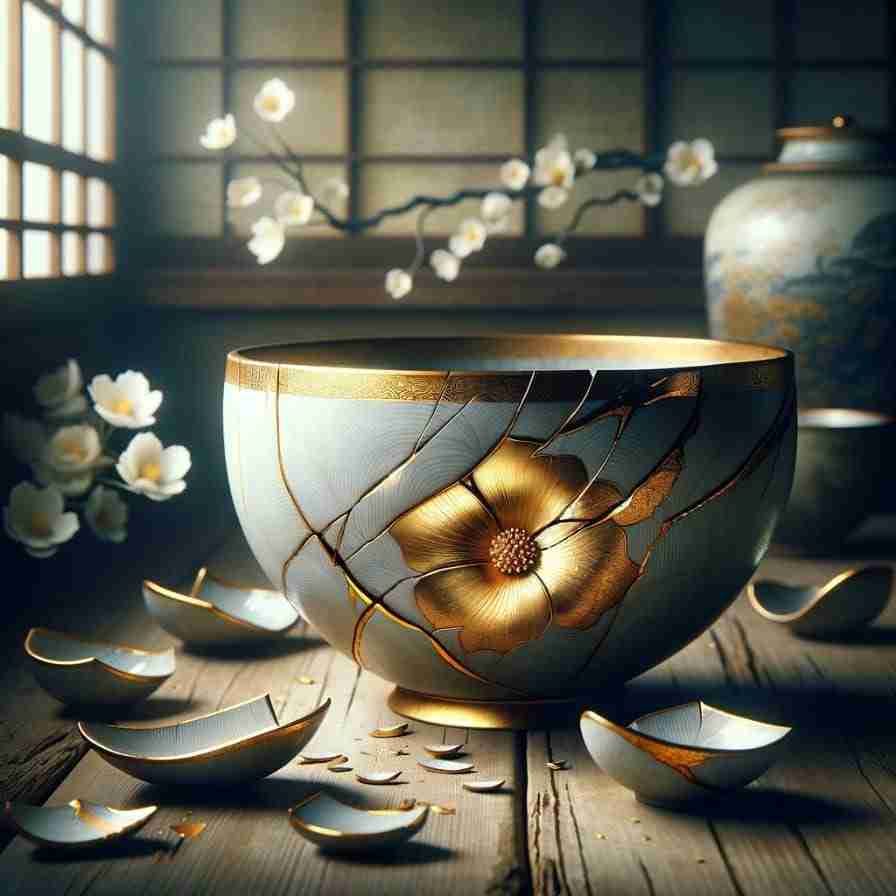
The philosophy behind Kintsugi is rooted in the belief that repairs can make an object even more beautiful and valuable, highlighting the beauty in imperfection and embracing the flawed or imperfect. It aligns with the Japanese philosophy of wabi-sabi, which finds beauty in the impermanent, modest, and incomplete.
Japanese artists who have filled porcelain cracks with gold dust in resin remind us that flaw is the most important attribute in our lives. The world destroys everybody at some point, and the scar is an enduring symbol in the metaphors of life. It tears us open and eventually encloses the rifts, but leaves a mark. And like humans, there is infinite variety. No Japanese art has been more eloquent in conveying this message than kintsugi or kinsukuroi.
Kintsugi Isn’t Just a Method for Fixing Broken Pottery, It’s a Metaphor for Life

Kintsugi isn’t just a method for fixing and repairing broken pottery, though. It also serves as a metaphor for healing and recovery, suggesting that breakage and repair are part of the unique history of an object, making it more unique and resilient.
When objects like vases, bowls, glasses, or cups shatter, instead of keeping cracks invisible, they’re rebonded using melted gold. This gold not only remains thick and conspicuous but also enchants the beholder’s gaze and touch.
Central to this art form of repairing cracked pottery is the belief that our flaws and breaks enrich our lives, urging us to carry them as badges of honor. It’s a way to treat broken pieces with love and respect and remember the history attached.
From Kintsugi, we glean wise insights into existence, like:
We are delicate beings, but not unrepairable
There is strength and allure in our flaws
We can embrace our imperfections and be proud of how they’ve helped us grow
Kintsugi beautifully champions the concept of mending brokenness in such a way that the repairs are not just visible but celebrated for their ability to enhance depth and make the object more resilient and beautiful.
Enjoy these inspiring Kintsugi quotes, and tell us your favorite one in the comment section!
Quotes on the Spirit of Kintsugi
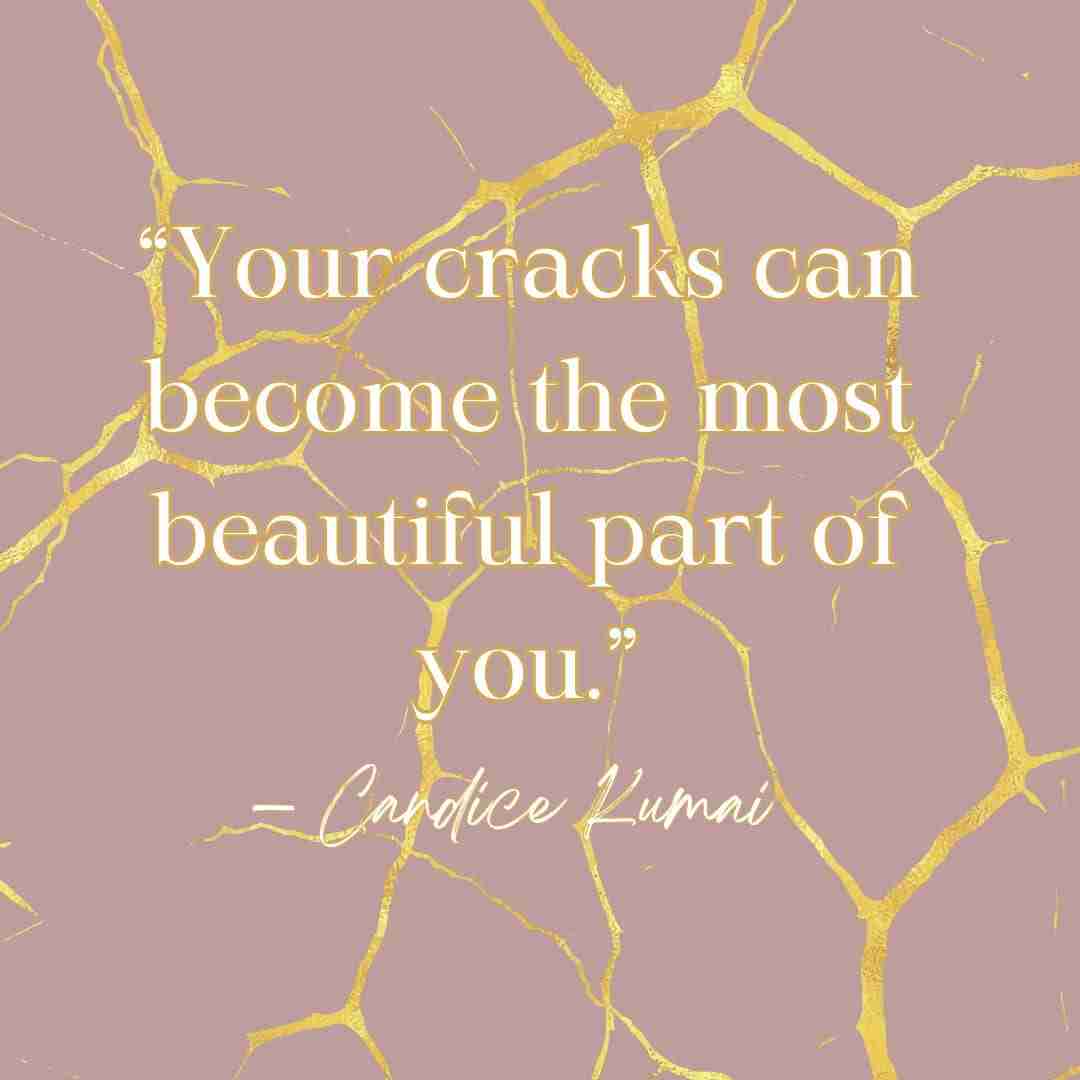
Kintsugi repairs broken pieces but also turns broken pieces into something inspiring, transforms dark into light, and turns coal into diamonds.
These Kintsugi quotes from inspirational leaders perfectly encapsulate the spirit of Kintsugi.
1. “The wound is the place where the Light enters you.” — Rumi
2. “Embrace the glorious mess that you are.” — Elizabeth Gilbert
3. “Your cracks can become the most beautiful part of you.” — Candice Kumai
4. “Every beautiful thing is damaged. You are that beauty; we all are.” — Bryant McGill
5. “I can be changed by what happens to me. But I refuse to be reduced by it.” — Maya Angelou
6. “Your wounds and healing are a part of your history; a part of who you are.” — Bryant McGill
7. “Owning our story and loving ourselves through that process is the bravest thing that we will ever do.” — Brené Brown
8. “The world breaks everyone, and afterward many are strong at the broken places.” — Ernest Hemingway, A Farewell to Arms
Inspiring Kintsugi Quotes
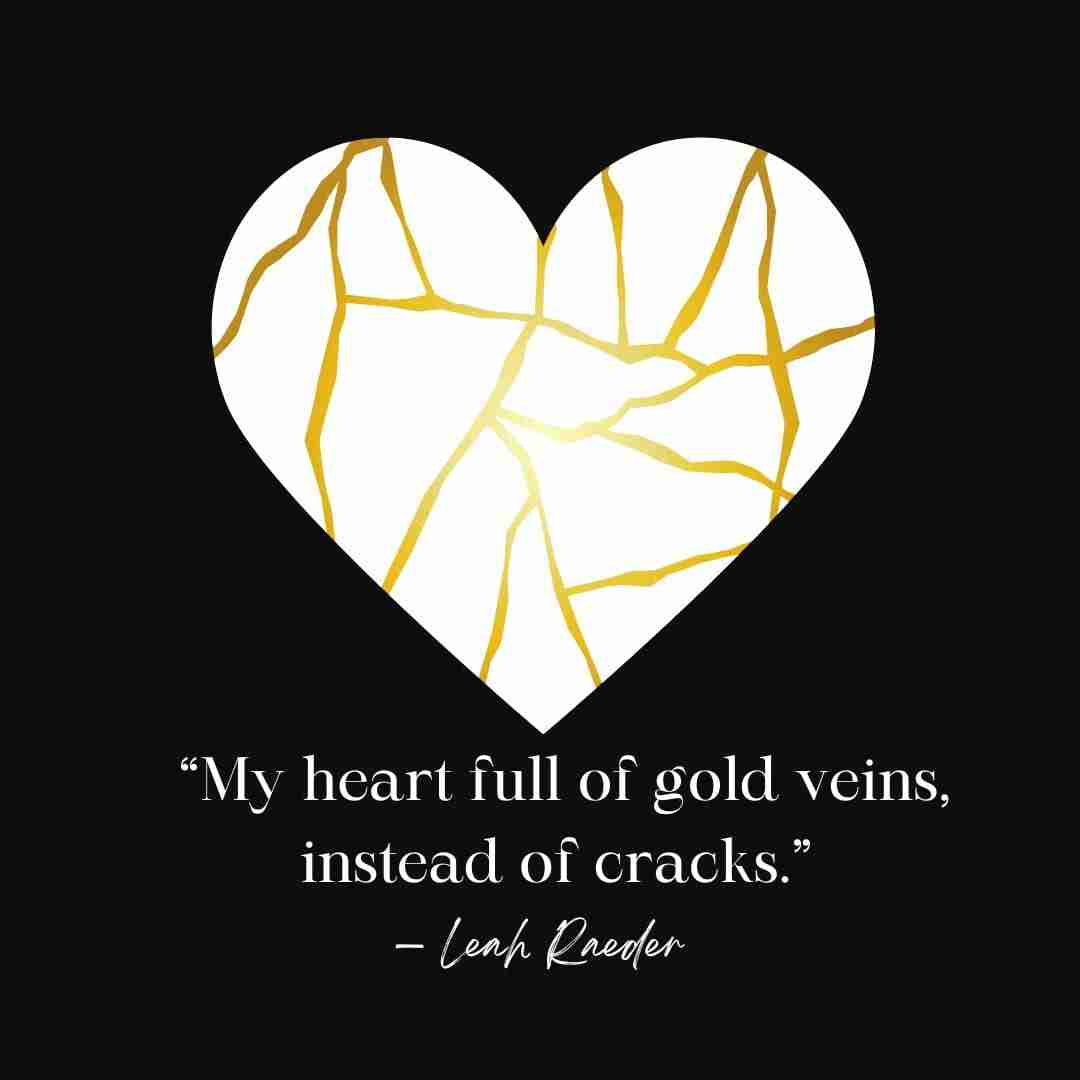
The philosophy of Kintsugi aims to move, uplift, and encourage us, just like the Kintsugi quotes below.
9. “My heart full of gold veins, instead of cracks.” — Leah Raeder
10. “The struggles will become your story, and that’s the beauty of Kintsugi.” — Candice Kumai

11. “That is what you’re supposed to see. The beauty is in the brokenness.” — Justin Whitmel Earley
12. “Broken pieces and their repair merely contribute to the story of an object; they don’t ruin it.” — Penny Reid
13. “Kintsugi: Embrace your imperfections and find happiness—the Japanese way.” — Tomas Navarro
14. “Your wounds and imperfections are your beauty. Like the broken pottery mended with gold, we are all Kintsugi.” — Bryant McGill
Brokenness Quotes
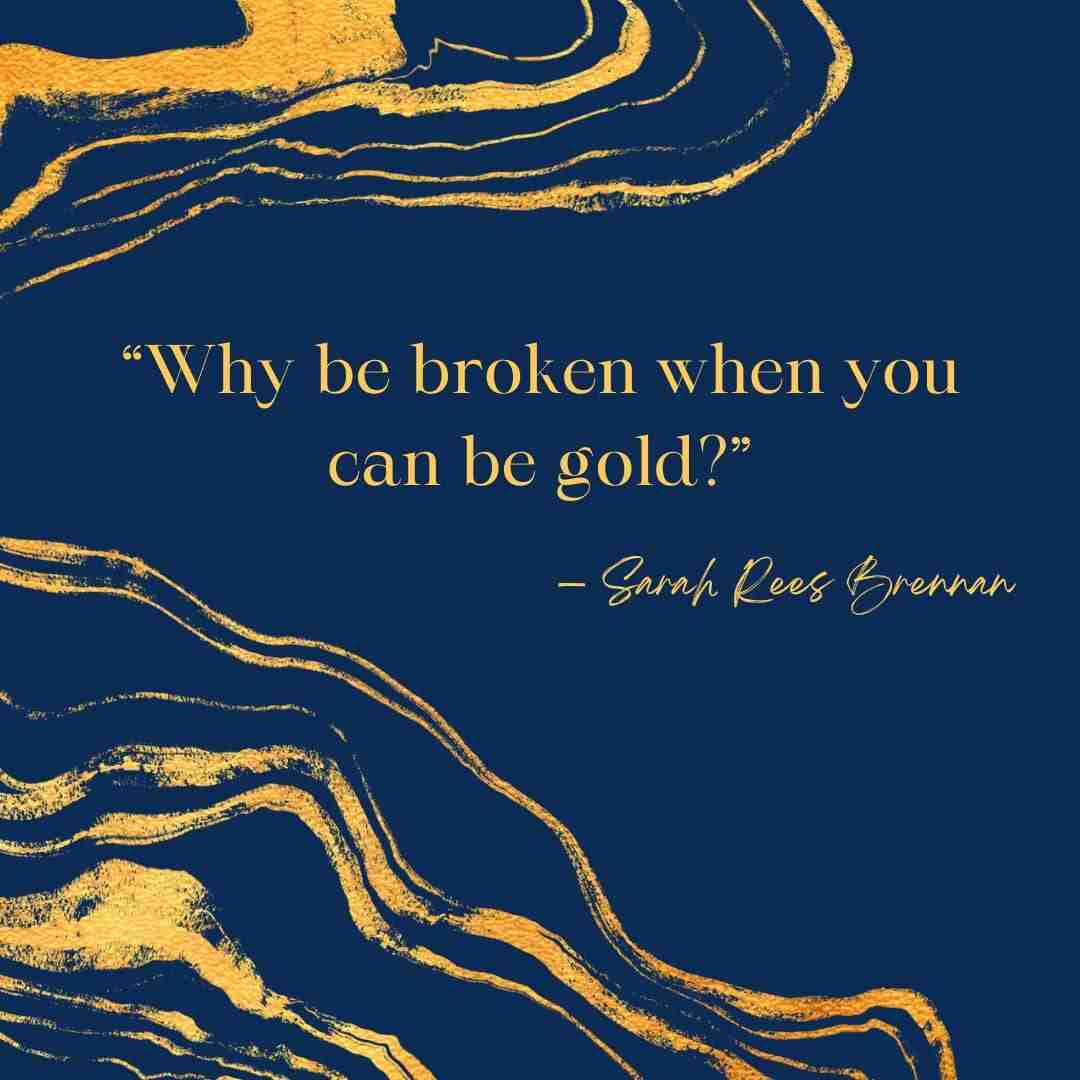
Even brokenness is beautiful, as these Kintsugi quotes wonderfully illustrate.
15. “To become beautiful, it had to break.” — Aura Trevortini
16. “Why be broken when you can be gold?” — Sarah Rees Brennan
17. “The secret to becoming unbreakable is realizing that you are already broken. We all are.” — Brant Menswar
18. “If you’re broken, hold until each piece of you heals one again. Life is but a Kintsukuroi.” — Samara Rhea Samuel
Kintsugi Quotes on Embracing Imperfection
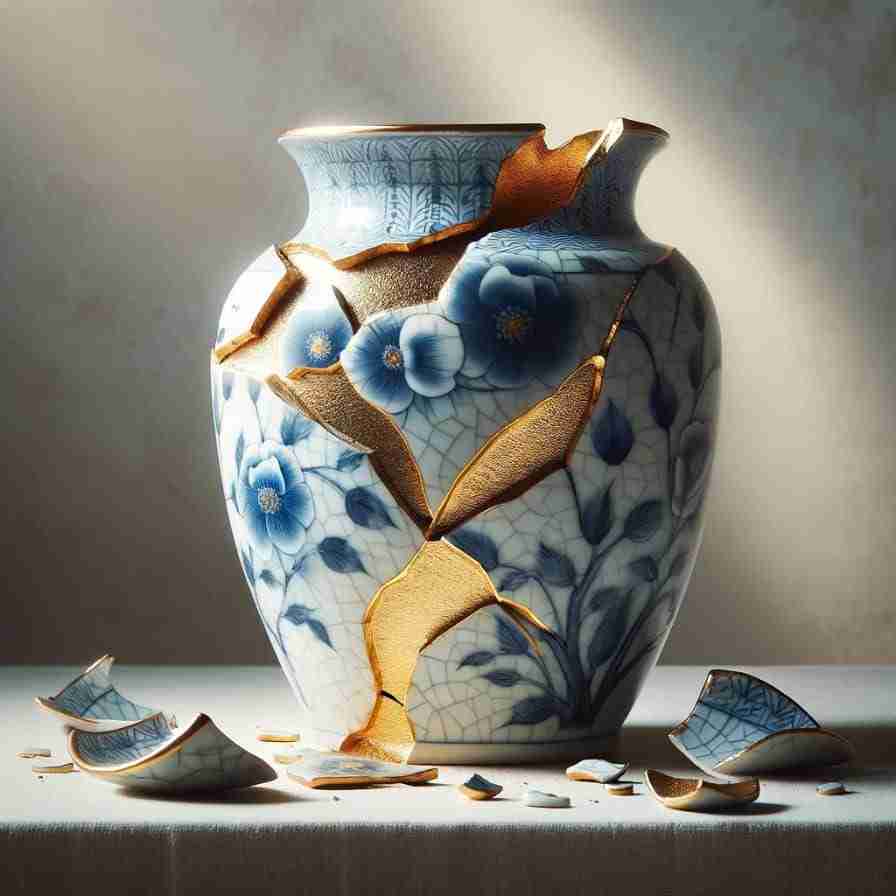
Fracture becomes an opportunity when accompanied by self-love and growth.
19. “Nothing lasts forever, nothing is complete, nothing is perfect.” –— Shawzi Tsukanoto
20. “Imperfection is not our personal problem; it is a natural part of existing.” — Pema Chödrön
“Imperfections are not inadequacies; they are reminders that we’re all in this together.” — Brené Brown

21. “I am looking forward to getting shattered only to add further elegance to myself.” — Aura Trevortini
22. “The bonded seams become an intrinsic part of the ceramic and add a personalized, one-of-a-kind beauty through its imperfections.” — Jo Ann V. Glim
Quotes on How The Japanese Art of Kintsugi is a Way of Honoring Your Flaws
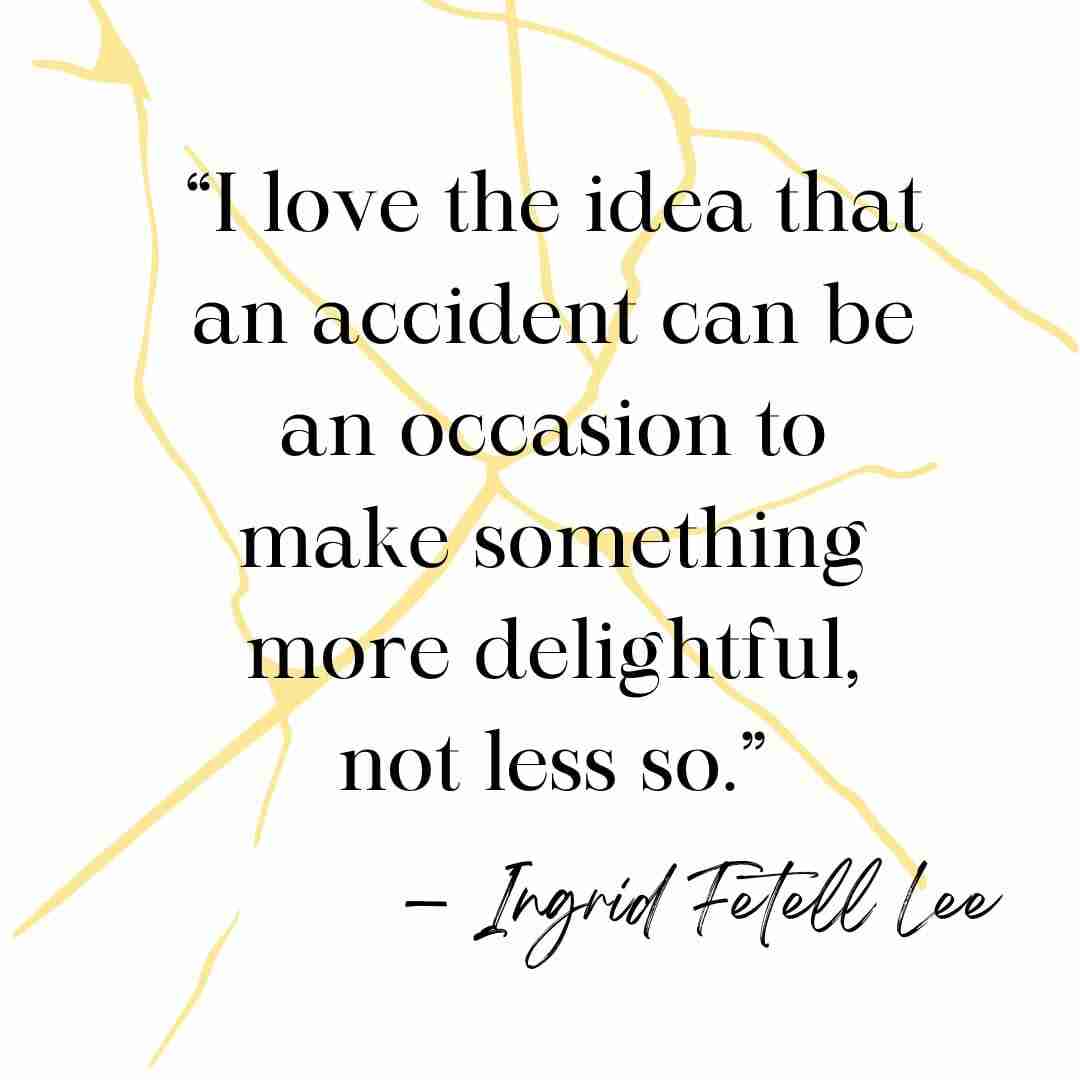
Too often, flaws are considered ugly, but Kintsugi tells us to remember that something of value comes from our past cracks and life stories.
The Kintsugi quotes below convey how we must incorporate our wounds into our story and highlight them with gold veins instead of merely trying to repair and forget them.
23. “They use gold, not invisible superglue, because mistakes shouldn’t be considered ugly.” — Penny Reid
24. “I love the idea that an accident can be an occasion to make something more delightful, not less so.” — Ingrid Fetell Lee
25. “It symbolizes how we must incorporate our wounds into who we are, rather than try to merely repair and forget them.” — David Wong
26. “A break is something to remember, something of value, a way to make the piece more beautiful, rather than something to disguise.” — Penny Reid
27. “Did you know that pottery can be repaired with gold?” Kami asked. “Then it’s meant to be stronger than before, and more beautiful.” — Sarah Rees Brennan
28. “What are you going to do? Everything, is my guess. It will be a little messy, but embrace the mess. It will be complicated, but rejoice in the complications.” — Nora Ephron
Kintsugi Quotes on Scars as Strength
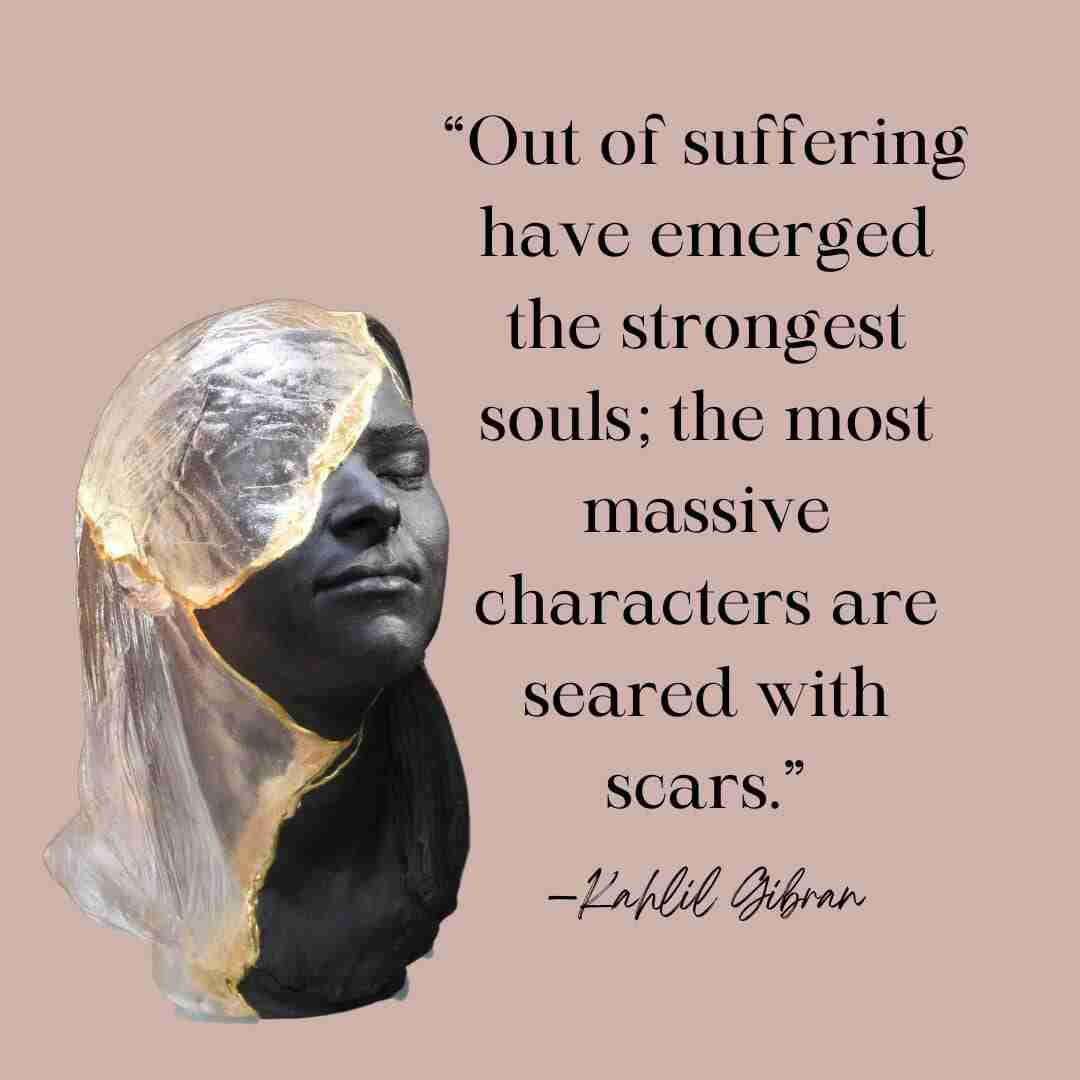
Nobody is without scars. However, scars can become some of the most beautiful and valuable aspects of ourselves when we don’t try to conceal them.
29. “Out of suffering have emerged the strongest souls; the most massive characters are seared with scars.” — Kahlil Gibran
30. “The scars are the design. Your attention is drawn to the cracks and how they are mended.” — Justin Whitmel Earley
31. “Your scar is an important part of your life and is a part of you. It is a living history; never look at scars as negative, instead take it as positive.” — Shawzi Tsukanoto
A Kintsugi Piece Honors an Object’s History
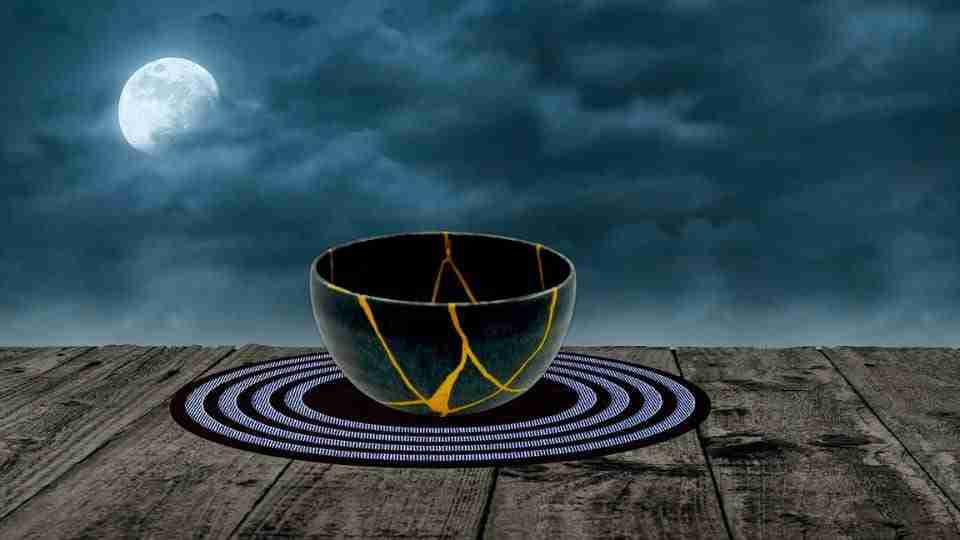
32. “The scar also tells the story of the piece, chronicling its past experience.” ― Rick Rubin
33. “The point of Kintsugi is to treat broken pieces and their repair as part of the history of an object.” — Penny Reid
34. “Kintsugi is based on the belief that something broken is stronger and more beautiful because of its imperfections, the history attached to it, and its altered state.” ― Jo Ann V. Glim
35. “…in repairing the object you really ended up loving it more, because you now knew its eagerness to be reassembled, and in running a fingertip over its surface you alone could feel its many cracks – a bond stronger than mere possession.” ― Nicholson Baker
36. “Kintsugi [is] not just a method of repair but also a philosophy. It’s the belief that the breaks, cracks, and repairs become a valuable and esteemed part of the history of an object, rather than something to be hidden. That, in fact, the piece is more beautiful for having been broken.” — Kathleen Tessaro
Making Imperfections a Valuable and Esteemed Part of Your History
In everyone’s journey, there comes a moment—or perhaps several—where we find ourselves gathering the fragments of our lives, seeking to piece them back into coherence. This necessity for reconstruction spans the spectrum of our existence, touching upon the intimate corners of relationships and friendships, the sanctity of marriages, the ambitions within our careers, the pursuit of education, the management of our finances, and the essential care for our mental and physical health. Each of these domains can experience moments of disarray, prompting us to engage in a process of thoughtful repair and restoration.
The ancient Japanese art of Kintsugi offers a profound metaphor for this aspect of our human experience. It teaches us to embrace, rather than conceal, the scars of our past, finding beauty in the imperfections and celebrating the resilience that comes from having been broken and made whole again.
Kintsugi is not merely about the physical mending of broken objects with gold; it is a reminder that our breaks, our cracks, and the places where we have glued ourselves back together are not to be hidden away in shame. Instead, they are a valuable and esteemed part of our history and should be displayed with pride, a testament to our strength and our capacity to overcome adversity.
Accepting The Change
Change is a permanent part of life. Change means learning something different and developing as an individual, even when we don’t want to.
The philosophy of kintsugi applies to change by encouraging us to view the rebuilding of our lives after change through a lens of compassion and acceptance, recognizing that the cracks and repairs in relationships, careers, and personal well-being are not signs of failure but evidence of our human vulnerability and our courage to mend what has been broken.
In honoring our imperfections and the journey to mend them, we celebrate the unique beauty that emerges from our efforts to heal and grow. Kintsugi teaches us that in the act of repairing, we are engaging in an act of transformation, creating something more meaningful, more resilient, and even more beautiful than before.
Transformative Resilience
Resilience can be regarded as the gold lacquer that helps us heal broken pieces. Make resilience your precious material, the golden joinery of self-love that will repair your many cracks. When your shattered pieces are carefully reassembled, they will bond stronger with the special resin mixed of resilience and self-worth and become the Kintsugi of your life.
Please share your favorite Kintsugi quote with us in the comment section; we would love to hear from you!

